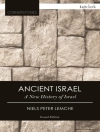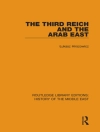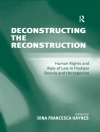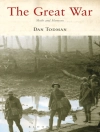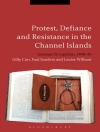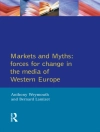Essays dealing with the question of how ‘sense of place’ is constructed, in a variety of locations and media.
The term ‘sense of place’ is an important multidisciplinary concept, used to understand the complex processes through which individuals and groups define themselves and their relationship to their natural and cultural environments, and which over the last twenty years or so has been increasingly defined, theorized and used across diverse disciplines in different ways. Sense of place mediates our relationship with the world and with each other; it providesa profoundly important foundation for individual and community identity. It can be an intimate, deeply personal experience yet also something which we share with others. It is at once recognizable but never constant; rather it isembodied in the flux between familiarity and difference. Research in this area requires culturally and geographically nuanced analyses, approaches that are sensitive to difference and specificity, event and locale.
The essayscollected here, drawn from a variety of disciplines (including but not limited to sociology, history, geography, outdoor education, museum and heritage studies, health, and English literature), offer an international perspectiveon the relationship between people and place, via five interlinked sections (Histories, Landscapes and Identities; Rural Sense of Place; Urban Sense of Place; Cultural Landscapes; Conservation, Biodiversity and Tourism).
Ian Convery is Reader in Conservation and Forestry, National School of Forestry, University of Cumbria; Gerard Corsane is Senior Lecturer in Heritage, Museum and Galley Studies, International Centre for Cultural and Heritage Studies, Newcastle University; Peter Davis is Professor of Museology, International Centre for Cultural and Heritage Studies, Newcastle University.
Contributors: Doreen Massey, Ian Convery, Gerard Corsane, Peter Davis, David Storey, Mark Haywood, Penny Bradshaw, Vincent O’Brien, Michael Woods, Jesse Heley, Carol Richards, Suzie Watkin, Lois Mansfield, Kenesh Djusipov, Tamara Kudaibergonova, Jennifer Rogers, Eunice Simmons, Andrew Weatherall, Amanda Bingley, Michael Clark, Rhiannon Mason, Chris Whitehead, Helen Graham, Christopher Hartworth, Joanne Hartworth, Ian Thompson, Paul Cammack, Philippe Dubé, Josie Baxter, Maggie Roe, Lyn Leader-Elliott, John Studley, Stephanie K.Hawke, D. Jared Bowers, Mark Toogood, Owen T. Nevin, Peter Swain, Rachel M. Dunk, Mary-Ann Smyth, Lisa J. Gibson, Stefaan Dondeyne, Randi Kaarhus, Gaia Allison, Ellie Lindsay, Andrew Ramsay
Jadual kandungan
Introduction: Making Sense of Place – Ian Convery and Peter Davis and Gerard Corsane
Land, Territory and Identity – David Storey
Viewing the Emergence of Scenery from the Lakes – Mark Haywood
Cumbrians and their ‘ancient kingdom’: Landscape, Literature and Regional Identity – Penny Bradshaw
Gypsies, Travellers and Place: a co-ethnography – Ian Convery and Vincent O’Brien
Rural People and the Land – Michael Woods and Jesse Heley and Carol Richards and Suzie Watkin
Hill farming identities and connections to place – Lois Mansfield
Place, Culture and Everyday Life in Kyrgyz Villages – Vincent O’Brien and Kenesh Djusipov and Tamara Kudaibergenova
Local renewables for local places? Attitudes to renewable energy and the role of communities in place-based renewable energy development – Jennifer Rogers
Local renewables for local places? Attitudes to renewable energy and the role of communities in place-based renewable energy development – Ian Convery
Local renewables for local places? Attitudes to renewable energy and the role of communities in place-based renewable energy development – Eunice Simmons
Local renewables for local places? Attitudes to renewable energy and the role of communities in place-based renewable energy development – Andrew Weatherall
Health, People and Forests – Amanda Bingley
Achieving Memorable Places… ‘Urban Sense of Place’ for successful urban planning and renewal? – Michael Clark
The Place of Art in the Public Art Gallery: A Visual Sense of Place – Rhiannon Mason and Chris Whitehead and Helen Graham
Survival sex work: vulnerable, violent and hidden lifescapes in the North East of England – Joanne & Christopher Hartworth
Survival sex work: vulnerable, violent and hidden lifescapes in the North East of England – Ian Convery
Gardens, Parks and Sense of Place – Ian Thompson
Gardens: places for nature and human-nature interaction – Paul Cammack and Ian Convery
The Image Mill: A Sense of Place for a Museum of Images – Philippe Dubé
Making Sense of Place and Landscape Planning at the Landscape Scale – Maggie Roe
Cultural Landscape and Sense of Place: community and tourism representations of the Barossa – Lyn Leader-Elliot
Territorial cults as a paradigm of place in Tibet – John Studley
Heritage and sense of place: amplifying local voice and co-constructing Meaning – Stephanie K. Hawke
Sense of Place in Sustainable Tourism: A Case Study in the Rainforest and Savannahs of Guyana – Gerard Corsane
Sense of Place in Sustainable Tourism: A Case Study in the Rainforest and Savannahs of Guyana – D Jared Bowers
Placing the Maasai – Mark Toogood
Nature Tourism: Do bears create a sense of place? – Owen Nevin and Peter Swain and Ian Convery
What’s Up? Climate change and our relationship with the hills – Rachel Dunk and Mary-Ann Smyth and Lisa. J Gibson
Nature conservation, rural development and ecotourism in central Mozambique: which space do local communities get? – Stefaan Dondeyne
Nature conservation, rural development and ecotourism in central Mozambique: which space do local communities get? – Randi Kaaarhus
Nature conservation, rural development and ecotourism in central Mozambique: which space do local communities get? – Gaia Allison
Rainforests, Place and Palm Oil in Sabah, Borneo – Ellie Lindsay and Andrew Ramsey and Ian Convery and Eunice Simmons
Afterword: Untying the Rope – Josephine Baxter
Mengenai Pengarang
Peter Davis is Emeritus Professor of Museology in the School of Arts and Cultures at Newcastle University, UK. His research interests relate to the connections between place, nature, heritage, communities and sustainability.


